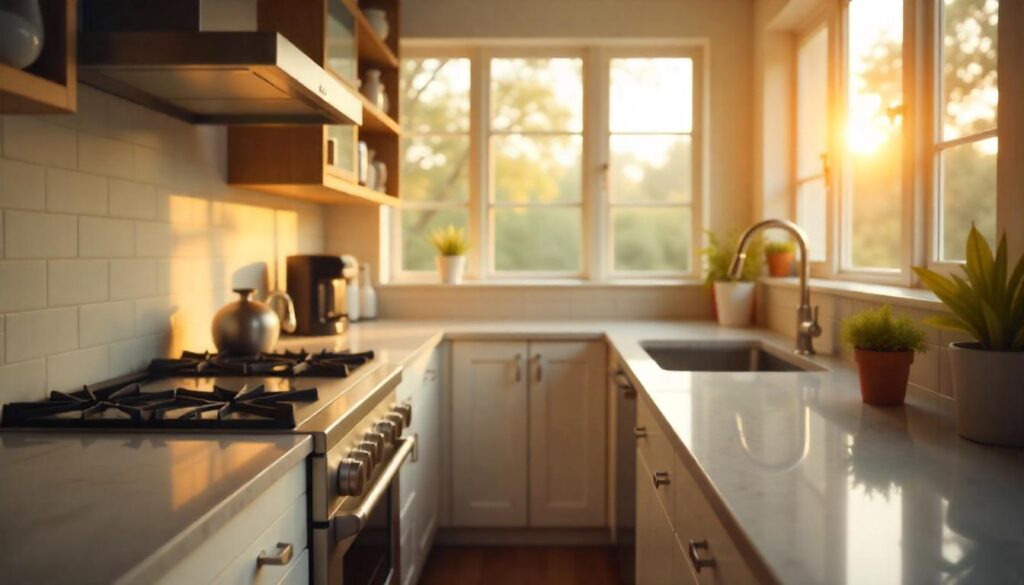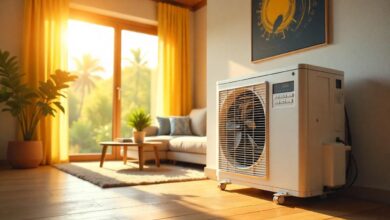Energy-Efficient Light Bulbs: Save Money, Power, and the Planet
Energy-Efficient Light Bulbs
In a world where energy conservation is becoming a necessity, switching to energy-efficient light bulbs is one of the simplest yet most effective ways to reduce electricity bills and environmental impact. Lighting accounts for around 15% of a typical household’s electricity usage. Upgrading your lighting solutions can save you money every month and help combat climate change.
Whether you’re renovating a home, building an office, or simply replacing old bulbs, this guide will help you understand the different types of energy-efficient bulbs, how they work, and what to consider before making a purchase.
What Are Energy-Efficient Light Bulbs?
Energy-efficient light bulbs are designed to use less electricity while producing the same (or more) light than traditional incandescent bulbs. They convert a greater portion of electrical energy into visible light, reducing waste in the form of heat. Modern bulbs can last several times longer, cut energy use by up to 80%, and lower maintenance costs.
Why Choose Energy-Efficient Lighting?
✅ Lower Electricity Bills
Energy-efficient bulbs consume significantly less power. Replacing just one 60-watt incandescent with a 10-watt LED can save over $10 a year in energy costs—and much more over the bulb’s lifetime.
✅ Long Lifespan
Modern bulbs, especially LEDs, can last 15,000 to 50,000 hours, which is 10 to 25 times longer than traditional options.
✅ Environmentally Friendly
Using less electricity means less carbon dioxide emitted by power plants. Efficient bulbs also contain fewer harmful materials and require less frequent replacement, reducing landfill waste.
✅ Better Performance
New technologies offer improved brightness, color temperature options, and dimming capabilities to suit any environment.
Types of Energy-Efficient Light Bulbs
1. LED Bulbs (Light Emitting Diode)
-
Efficiency: Highest among all bulb types
-
Lifespan: 15,000–50,000 hours
-
Wattage: Uses about 10–15% of the energy of an incandescent bulb
-
Best For: All household, commercial, and outdoor uses
Pros:
-
Extremely long life
-
Cool operation (no heat emission)
-
Wide variety of shapes and colors
-
Environmentally friendly (no mercury)
Cons:
-
Slightly higher upfront cost (offset by long-term savings)
2. CFL Bulbs (Compact Fluorescent Lamp)
-
Efficiency: Uses about 70–80% less energy than incandescent
-
Lifespan: 8,000–10,000 hours
-
Best For: Indoors, areas where lights stay on for long periods
Pros:
-
Affordable
-
Widely available
-
Moderate energy savings
Cons:
-
Contains small amounts of mercury (needs careful disposal)
-
May take time to reach full brightness
3. Halogen Incandescent Bulbs
-
Efficiency: 20–30% more efficient than traditional incandescents
-
Lifespan: 1,000–2,000 hours
-
Best For: Dimming applications, temporary lighting needs
Pros:
-
Inexpensive
-
Instant brightness
-
Compatible with dimmers
Cons:
-
Still less efficient than LEDs and CFLs
-
Shorter lifespan
How to Choose the Right Energy-Efficient Light Bulb
1. Check the Lumens, Not Watts
Watts measure energy use, not brightness. Lumens indicate how much light a bulb emits. For example:
-
800 lumens ≈ 60-watt incandescent
-
1600 lumens ≈ 100-watt incandescent
2. Consider the Color Temperature
-
2700K–3000K (Warm White): Cozy, yellowish light—ideal for living rooms and bedrooms
-
3500K–4100K (Cool White): Neutral white—suitable for kitchens and bathrooms
-
5000K–6500K (Daylight): Bright blue-white—great for offices, garages, or task lighting
3. Look for Energy Labels
Buy bulbs with labels like:
-
ENERGY STAR
-
BEE Star Rating (in India)
These ensure the product meets strict energy efficiency standards.
4. Choose the Right Shape and Base
Energy-efficient bulbs come in standard, globe, flood, candle, and spotlight shapes with various base types (E27, B22, GU10, etc.).
5. Dimming Compatibility
If using dimmers, ensure your LED or CFL is dimmable. Not all efficient bulbs support dimming.
Benefits Beyond Energy Saving
-
Lower Cooling Costs: Unlike incandescent bulbs, LEDs emit minimal heat, reducing your air conditioning load.
-
Improved Light Quality: LEDs are available in high Color Rendering Index (CRI) ratings for truer color perception.
-
Smart Integration: Many LEDs work with smart home systems (Google Assistant, Alexa, etc.) for automated control.
Cost Comparison: Incandescent vs. LED
| Bulb Type | Lifespan (hours) | Energy Use (Watts) | Estimated Yearly Cost* | Total Cost Over 10 Years |
|---|---|---|---|---|
| Incandescent | 1,000 | 60 | $8–$10 | $80–$100 |
| CFL | 8,000 | 13–15 | $2–$3 | $20–$30 |
| LED | 25,000+ | 8–10 | $1–$2 | $10–$20 |
**Based on 3 hours/day usage and $0.12/kWh electricity cost.
Disposal and Recycling
While LEDs are safer than CFLs (which contain mercury), all bulbs should be disposed of properly:
-
Take used CFLs and LEDs to a certified recycling center.
-
Never throw fluorescent tubes in the trash.
-
Check local e-waste collection guidelines for proper handling.
Frequently Asked Questions (FAQs)
Q: Are LED bulbs really worth the higher price?
A: Yes. Though initially more expensive, LEDs last longer and consume less electricity—resulting in much higher savings over time.
Q: Do energy-efficient bulbs work with existing fixtures?
A: Most LEDs and CFLs are designed to fit standard sockets and fixtures. Always check base type and voltage compatibility.
Q: Is LED light harmful to eyes?
A: No, if chosen correctly. Look for flicker-free, low blue light certified LEDs. Warm white tones are gentler on the eyes.
Q: Can I use energy-efficient bulbs outdoors?
A: Yes, but choose weatherproof or outdoor-rated bulbs for safety and durability.
Final Thoughts
Switching to energy-efficient light bulbs is a small change that brings big results. From lowering electricity bills and reducing carbon emissions to improving home lighting quality, the benefits are undeniable. With a wide range of options—LEDs, CFLs, halogens—there’s a perfect bulb for every room, mood, and function.
Make the smart move today. Light your space efficiently, responsibly, and beautifully.

